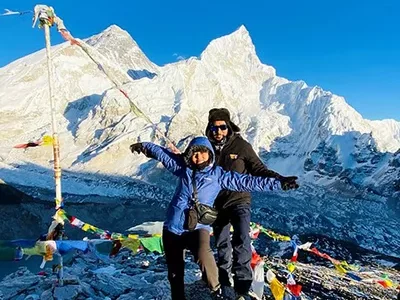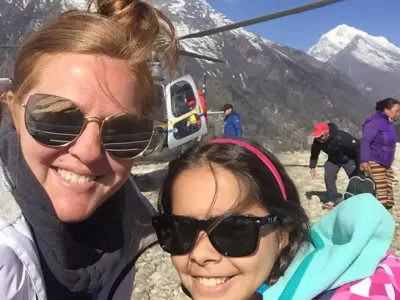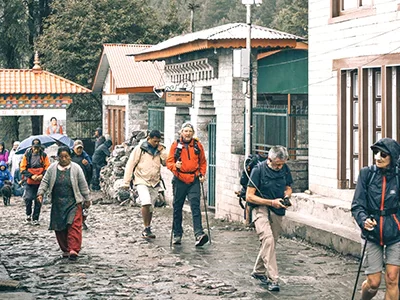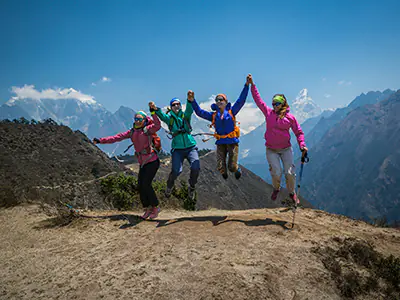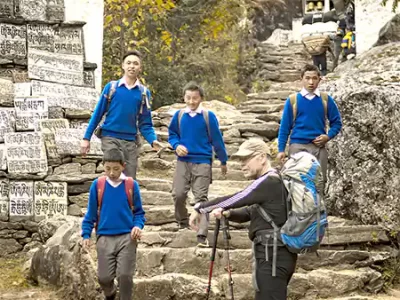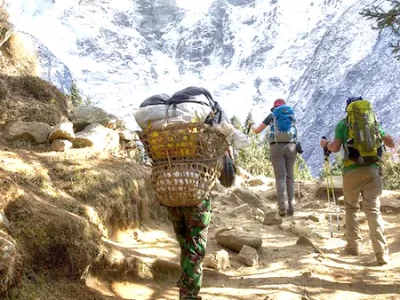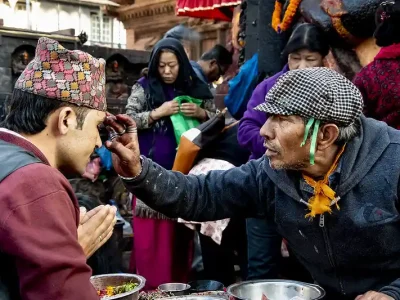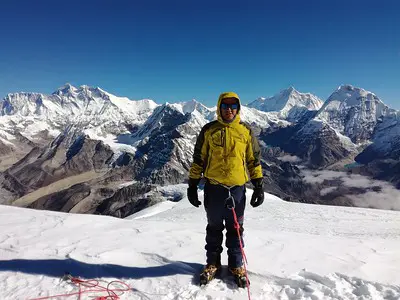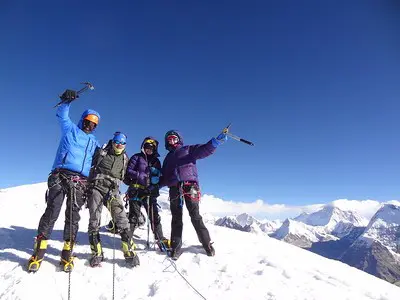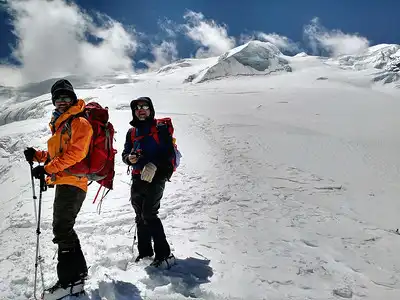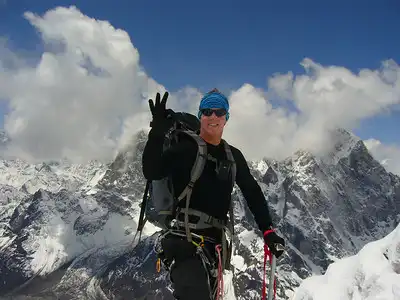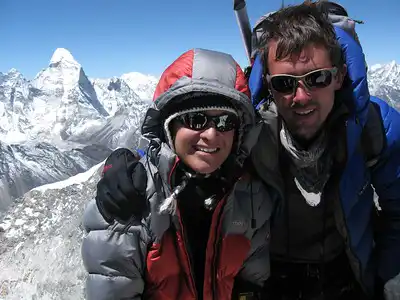Nestled amidst the majestic peaks of the Everest region, the small Sherpa village of Pangboche radiates tranquility and cultural richness. Situated at an impressive altitude of 3,930 meters (12,894 ft), this place provides trekkers with an unforgettable stop on their Everest Base Camp trek. Beyond its scenic allure, this place holds deep spiritual significance thanks to the presence of the revered Pangboche Monastery.
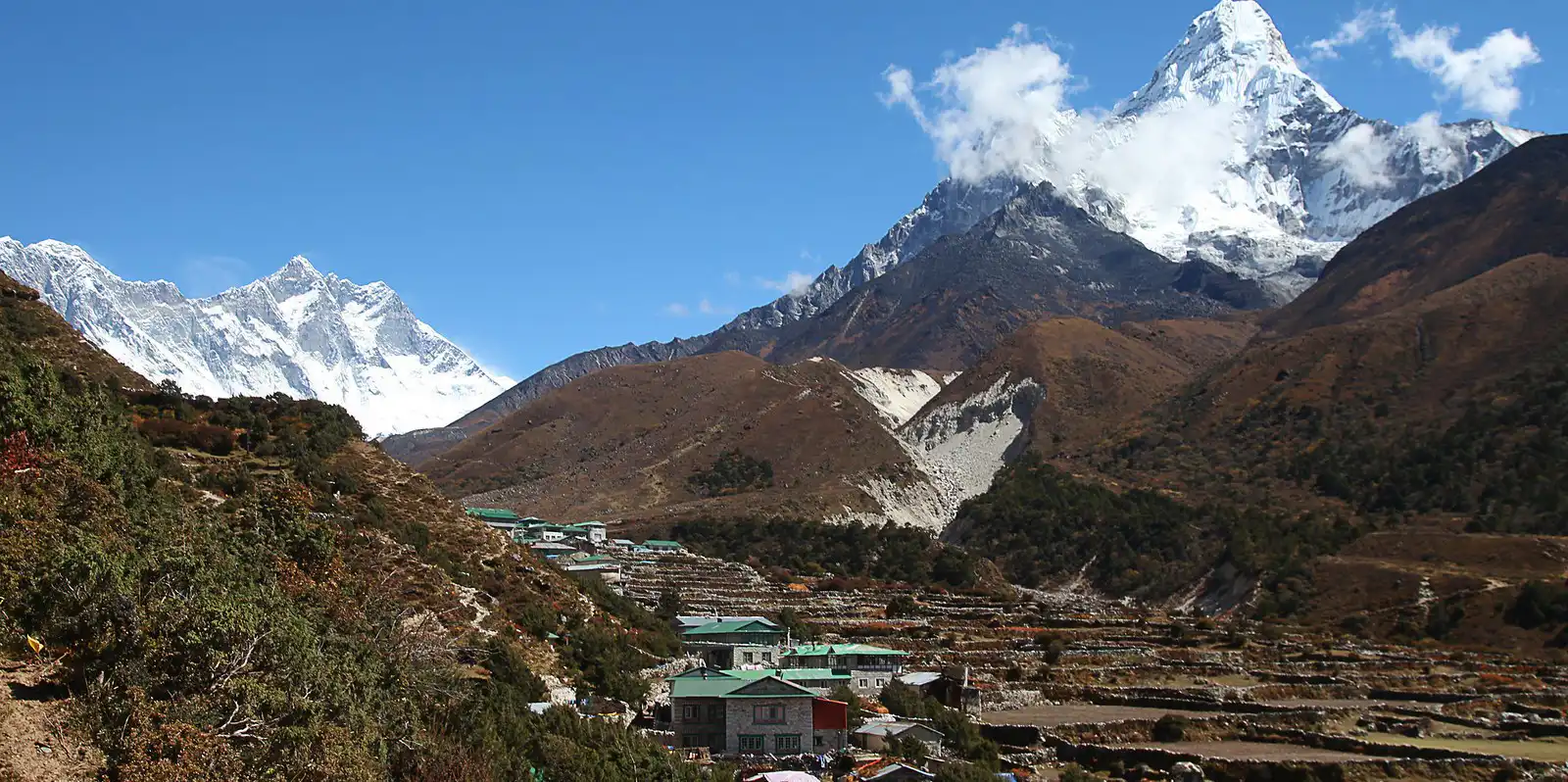
Pangboche is a crucial acclimatization point for trekkers heading to Everest Base Camp. The village offers a much-needed rest, enabling hikers to adapt to the high altitude and gear up for the challenges. Its strategic position unveils awe-inspiring vistas of the surrounding Himalayan giants, including Ama Dablam, Lhotse, and the mighty Everest itself.
Unveiling Pangboche’s Highlights
- Pangboche Monastery: Believed to be over 300 years old, this ancient Buddhist monastery holds immense spiritual value for the local Sherpa community. It safeguards sacred relics and provides a peaceful setting for meditation and introspection.
- Pangboche’s Altitude: Perched at 3,930 meters (12,894 ft), this place facilitates a gradual acclimatization process for trekkers, reducing the risk of altitude sickness.
- Pangboche’s Weather: The weather in this place can be unpredictable, with temperatures fluctuating significantly throughout the year. Be sure to check the weather before your trek and pack appropriate attire.
- Pangboche Village Life: The village offers a unique window into traditional Sherpa life. Visitors can engage with friendly locals, savor authentic cuisine, and wander through charming alleys adorned with colorful prayer flags.
Discovering Pangboche
- Explore Pangboche Monastery: Dedicate some time to exploring the monastery and observing the monks’ daily rituals. Respect the sacredness of the space and dress modestly.
- Conquer Ama Dablam Base Camp: For those seeking an extra dose of adventure, the trek to Ama Dablam Base Camp promises awe-inspiring mountain views.
- Immerse in the Himalayan Grandeur: Unwind and absorb the breathtaking Himalayan panorama. The sight of snow-capped peaks set against a clear blue sky is unforgettable.
- Embrace Sherpa Culture: In this remote mountain haven, you can connect with the warm and hospitable Sherpa people and learn about their customs, traditions, and unique way of life.
Everest Base Camp Trek
Everest Base Camp Trek with Helicopter Return
Luxury Everest Base Camp Trek
Geographical Glimpse into a High-Altitude Haven
Pangboche, a Himalayan gem in Nepal, delights visitors with its breathtaking scenery and deep cultural immersion. Its strategic location and distinct characteristics make it a noteworthy stop for those venturing into the Everest region.
Pangboche Altitude: Embracing the Heights
Pangboche stands tall at an impressive altitude of 3,985 meters (13,074 feet) above sea level. This elevation places it firmly within the Khumbu region, a section of the Himalayas renowned for its dramatic landscapes and challenging treks.
The village’s altitude is a crucial acclimatization point for trekkers aiming for Everest Base Camp or other high-altitude destinations. The thin air and breathtaking vistas remind visitors of the sheer power and beauty of the Himalayan mountain range.
Pangboche Village: A Traditional Sherpa Settlement
The layout of Pangboche village reflects the traditional Sherpa way of life, seamlessly blending with the surrounding environment. The town comprises sturdy stone houses with colorful accents and warmly welcoming weary travelers.
Tea houses dot the landscape, providing sustenance and a place to connect with fellow adventurers. The local Sherpa community maintains its rich cultural heritage, which is evident in its daily practices, vibrant festivals, and deep respect for the surrounding mountains.
Key Features of Pangboche Village
- Traditional Sherpa Homes: The village houses showcase traditional Sherpa architecture, built to withstand the harsh Himalayan climate.
- Tea Houses and Lodges: These establishments offer a place to rest, refuel, and socialize. They often serve as a hub for exchanging stories and information among trekkers.
- Community Life: This place’s residents are known for their warmth and hospitality. Witnessing their daily routines and interactions offers a glimpse into the unique Sherpa culture.
- Spiritual Significance: The presence of the historic Pangboche Monastery further enriches the village’s cultural tapestry.
Navigating Pangboche’s Geography
- Acclimatization: Due to its high altitude, spending time in this place is crucial. Take it slow, hydrate well, and listen to your body.
- Exploration: Stroll through the village, interact with locals, and visit the monastery. The surrounding trails offer stunning views and opportunities for shorter hikes.
- Respectful Travel: Remember to be mindful of the local culture and environment. Dress modestly, avoid disturbing wildlife, and leave no trace.
Himalayan Village Steeped in Spirituality and Sherpa Traditions
Nestled in the heart of the Everest region, this place isn’t just another picturesque stop on the trekking route—it’s a living testament to centuries of Sherpa culture and Buddhist heritage.
Pangboche Monastery: The Soul of the Village
Since its founding in the 17th century, the Pangboche Monastery, an ancient spiritual heart of the Khumbu region, has stood as a silent observer of Sherpa generations.
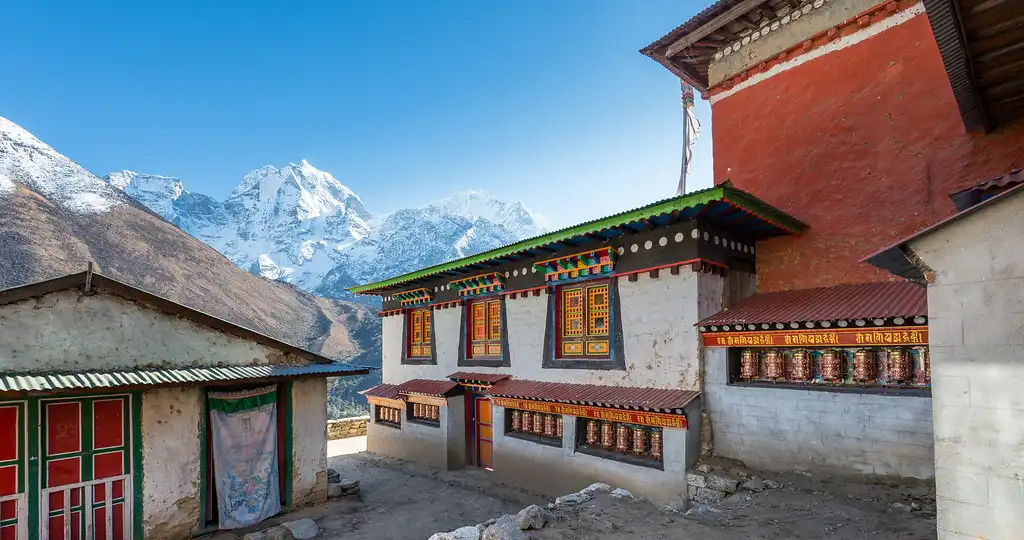
This sacred site is an anchor for the community’s spiritual beliefs, offering solace and guidance amidst the majestic Himalayan peaks.
Architectural Beauty and Sacred Treasures
The monastery’s architecture is a visual treat, showcasing traditional Tibetan Buddhist styles and adorned with colorful prayer flags that dance in the mountain wind. Step inside, and you’ll discover a treasure trove of sacred relics.
Ancient statues gaze serenely, vibrant thangkas (religious paintings) adorn the walls, and timeworn manuscripts whisper stories of the past. These artifacts whisper stories of a rich Buddhist legacy passed down through the ages.
The Yeti Legend: Where Myth Meets Mystery
One intriguing tale associated with the Pangboche Monastery revolves around the legendary Yeti. Once believed to belong to this elusive creature, a scalp was reportedly kept within the monastery walls.
While its current whereabouts remain a mystery, the legend continues to spark curiosity and debate, adding a touch of mystique to this place’s history.
The Monastery’s Embrace: Sherpa Culture and Spirituality
The Pangboche Monastery is the beating heart of Sherpa culture, serving as a vibrant center for religious ceremonies, festivals, and Buddhist teachings.
The resident monks guide and support the community, preserving ancient traditions and ensuring their transmission to future generations. A solid connection to their monasteries fosters the Sherpa people’s deep-rooted respect for the mountains and nature.
Pangboche’s Rich Tapestry
Beyond its spiritual role, the monastery is a social nucleus, drawing the community together for gatherings and celebrations. Visitors to this place can witness the beautiful interplay of faith and everyday life, a testament to the village’s unique cultural fabric.
Experiencing Pangboche’s Cultural Treasures
- Respectful Monastery Visits: Remember to honor the monastery’s sacredness. Dress modestly and avoid any disruptive behavior.
- Embrace the Community: Engage with the friendly Sherpa people to better understand their customs and traditions. Join in their festivals, sample local delicacies, and support local businesses.
- Explore Buddhist Teachings: Learn about Buddhist philosophy and the foundation of Sherpa culture and beliefs.
Everest Base Camp Trek for Beginners
Everest Panorama Trek
Everest View Trek
Trekking to Pangboche: A Himalayan Journey of Discovery
Pangboche, nestled high in the Khumbu region of Nepal, beckons trekkers with its stunning vistas and rich cultural tapestry. Whether you’re an experienced hiker or a first-timer seeking adventure, the trek to this place is unforgettable.
Popular Trekking Routes through Pangboche
The most common route to this place is the iconic Everest Base Camp trek. This challenging yet rewarding trail takes you through diverse landscapes, Sherpa villages, and ancient monasteries, culminating in a breathtaking view of the world’s highest peak. Other treks that include this place are the Three Passes Trek and the Gokyo Lakes Trek.
The Path to Pangboche: Distance and Highlights
- Namche Bazaar to Pangboche: This section covers approximately 10-12 kilometers (6-7.5 miles) and usually takes around 5-6 hours.
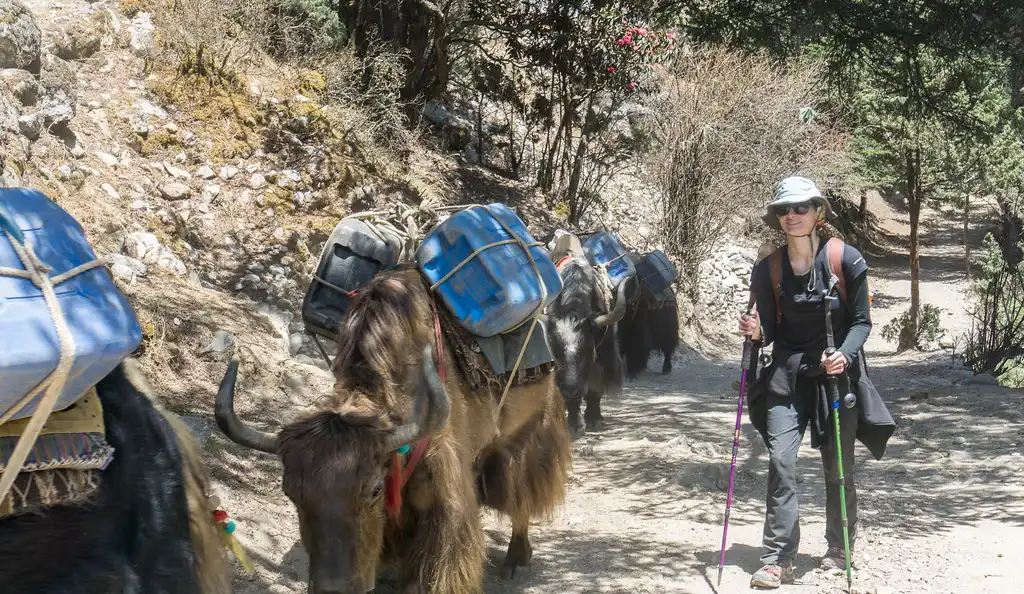
You’ll traverse through lush rhododendron forests, cross suspension bridges over roaring rivers, and encounter prayer wheels and chortens.
- Tengboche to Pangboche: The trek from Tengboche to Pangboche is relatively shorter, spanning about 4-5 kilometers (2.5-3 miles). This scenic walk takes around 2-3 hours and offers glimpses of Ama Dablam, Everest, and other majestic peaks.
Scenic Beauty and Panoramic Views
This place’s strategic location rewards trekkers with unparalleled views. The village is a vantage point for some iconic Himalayan peaks.
- Ama Dablam: The “Matterhorn of the Himalayas,” Ama Dablam, dominates the skyline with its distinctive pyramid shape.
- Everest:
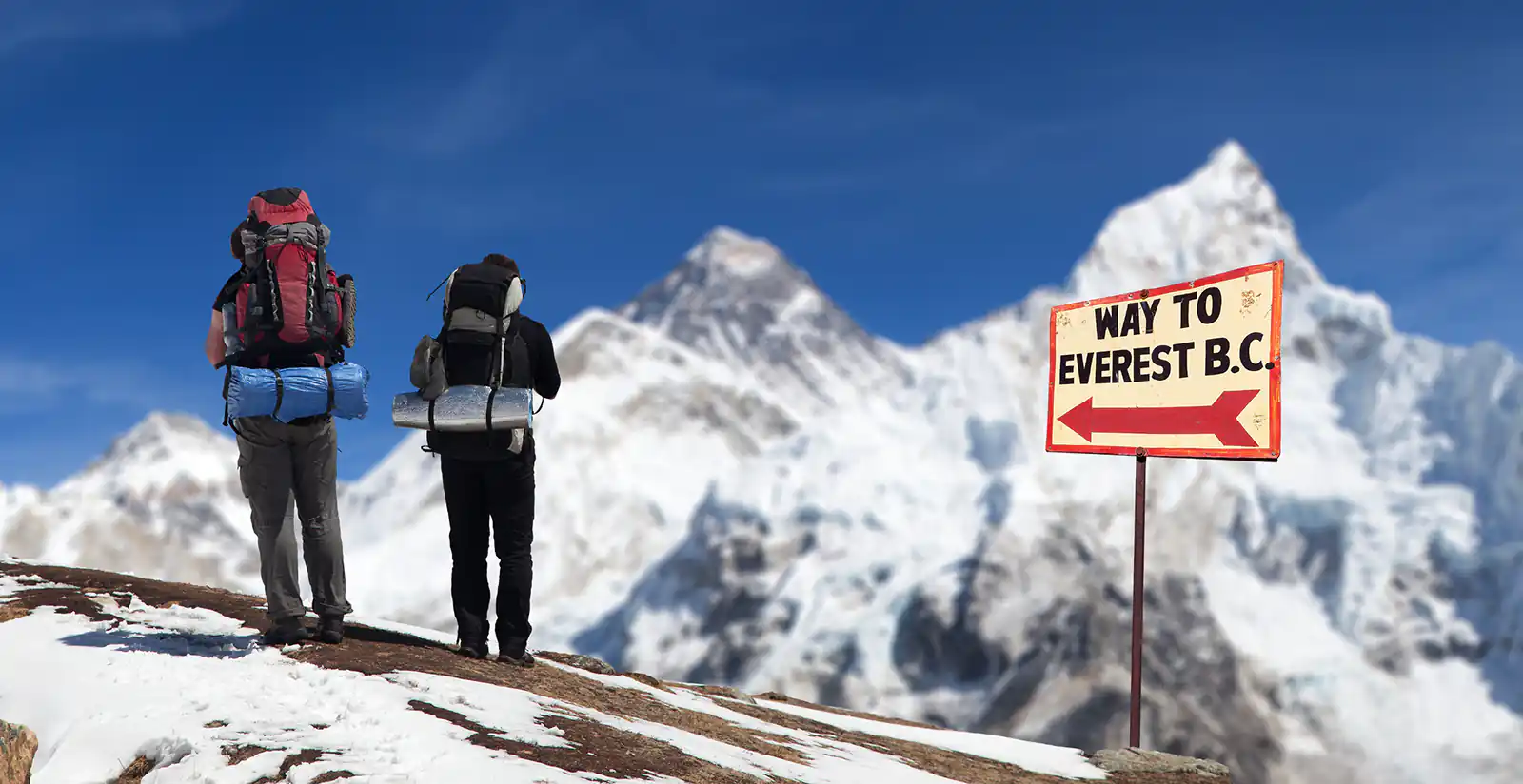
Catch a glimpse of Mount Everest, the world’s highest mountain, as it peeks out from behind the surrounding peaks.
- Lhotse and Nuptse: These formidable mountains frame the Everest panorama, adding to the dramatic scenery.
Tips for Trekking to Pangboche
- Acclimatization: Pangboche’s altitude of 3,985 meters (13,074 ft) requires proper acclimatization. Take your time, stay hydrated, and listen to your body.
- Pangboche Weather: The weather in the Himalayas can change rapidly. Be prepared for varying conditions, from sunshine to snow, even within a day.
- Permits: Be sure to acquire all required trekking licenses before your trek.
- Pack Wisely: Bring sturdy hiking boots, warm layers, rain gear, and a durable backpack.
- Respect Local Culture: The Sherpa people of this place are known for their hospitality and rich cultural traditions. Be respectful of their customs and beliefs.
Pangboche Weather: A Symphony of Seasons
Perched at 3,985 meters (13,074 feet), this place experiences a dynamic climate with four distinct seasons, each painting a different picture:
- Spring (March-May): Spring ushers in warmer temperatures, a vibrant display of blooming rhododendrons, and clear skies. This popular trekking season occasionally surprises you with rain showers, so be prepared.
- Summer (June-August): The monsoon season blankets the village in heavy rainfall and cloudy skies. Slippery conditions and reduced visibility make trekking arduous during this period.
- Autumn (September-November): Autumn reigns supreme as the prime time to visit this place. Crystal-clear skies, awe-inspiring vistas, and stable weather create the perfect backdrop for trekking adventures.
- Winter (December-February): This place experiences cold, snowy winters with temperatures below freezing. While trekking remains possible, it demands proper gear and readiness for harsh conditions.
Weather’s Influence on Pangboche Life
The ever-changing weather patterns in this place significantly shape both trekking endeavors and the daily rhythms of village life.
- Trekking: Always consult the weather forecast before venturing out. Pack versatile clothing suitable for various conditions, and remain flexible to adjust your plans as needed.
- Daily Life: The Sherpa people have skillfully adapted their way of life to the mountain climate. During the colder months, they are bundled up in warm attire and gather around cozy fireplaces. Agriculture and outdoor activities harmonize with the seasonal rhythms.
Cultural Encounters in Pangboche: Embracing Sherpa Traditions
Pangboche unveils a treasure trove of cultural experiences, providing a glimpse into the unique Sherpa way of life.
- Festivals: Experience the vibrancy of local festivals such as Dumje and Mani Rimdu, where traditional dances, music, and religious ceremonies come alive.
- Community Connections: Establish conversations with the friendly Sherpa people to understand their customs, beliefs, and daily routines.
- Home Visits: Experience genuine Sherpa hospitality by visiting local families who open their homes to travelers and share their way of life firsthand.
- Culinary Traditions: Unravel the secrets of Sherpa cuisine through cooking classes or savor authentic meals at local tea houses.
- Agricultural Practices: Observe how the villagers skillfully cultivate crops in the high-altitude environment, adapting their practices to the unique terrain.
Finding Comfort in the Himalayas: Accommodation and Facilities in Pangboche, Nepal
Pangboche, Nepal, offers a unique haven for trekkers and adventurers in the majestic Himalayas. However, its location and high altitude shape the available accommodations and facilities. Before you venture to this charming Sherpa village, it’s wise to be prepared and set realistic expectations.
Where to Stay in Pangboche
Tea houses and lodges serve as the mainstays of accommodation in this place. These family-run establishments offer travelers simple yet comfortable lodging. While they might not boast the luxuries of city hotels, they exude a warm, welcoming ambiance, perfect for rest and rejuvenation after a day on the trails.
- Tea Houses: Your Home Away From Home Tea houses are the most common lodging in this place. They usually provide basic rooms with shared bathrooms and communal dining areas.
- Lodges: A Touch of Comfort For those seeking slightly more amenities, lodges might offer private rooms with attached bathrooms. Remember, even lodges in this place maintain a rustic mountain charm.
What to Expect: Amenities and Services
This place’s remote location and rugged terrain mean some amenities and services might need to be improved. Here’s a glimpse of what you can typically expect:
- Cozy Rooms: Rooms in tea houses and lodges are basic and equipped with twin beds and warm blankets. Modern furnishings and plush bedding are different here.
- Shared Facilities: Most tea houses have shared bathrooms with squat toilets. While hot showers might be available, they often come at an extra cost and might only sometimes be consistent due to the village’s resource limitations.
- Hearty Meals: Tea houses dish up satisfying meals prepared with local ingredients and traditional Sherpa recipes. Trekkers rely on the hearty and nutritious Dal Bhat to power their adventures.
- Electricity: The Pulse of the Mountains: Electricity in this place typically comes from solar panels or small hydropower plants. Expect occasional power outages and limited options for charging your devices.
- Connectivity: Embrace the Disconnect: Wi-Fi and mobile networks can be patchy in this place. See this as an opportunity to unplug and savor the mountain’s tranquility.
Setting Realistic Expectations
- Pack Light: Bring only the essentials to ease your trekking load.
- Embrace Simplicity: Enjoy the basic comforts of tea houses and relish the chance to escape the hustle and bustle of modern life.
- Cultural Sensitivity: Be mindful of and sensitive to local traditions. Dress modestly and be respectful in your interactions with the villagers.
- Patience is Key: Services in remote mountain regions may be slower than in urban areas. Approach everything with patience and understanding.
Pangboche’s Strategic Location on the Everest Trek
Located at a lofty 3,985 meters (13,074 feet), Pangboche occupies a key position on renowned trekking routes, notably the Everest Base Camp trek. It is a common stopover between Namche Bazaar and Dingboche, allowing trekkers to acclimate and gear up for the demanding climbs ahead.
Acclimatization and Rest: Your High-Altitude Allies
Acclimatization, adapting your body to thinner air at higher altitudes, is crucial for a successful and safe trek. This place’s altitude makes it an ideal spot for this essential process. Spending a day or two here, exploring the surroundings with short hikes, helps your body adjust gradually, minimizing the risk of altitude sickness.
Why Pangboche is a Trekker’s Haven for Acclimatization
- Altitude Advantage: The village’s elevation offers a substantial altitude gain compared to lower stops like Namche Bazaar, aiding acclimatization.
- Scenic Hikes: Short hikes around this place elevate your heart rate and breathing, further facilitating acclimatization.
- Tranquility: The peaceful atmosphere of Pangboche village encourages rest and recovery, which is vital for high-altitude trekking.
Beyond Acclimatization: Discover Pangboche’s Charms
While acclimatization is a primary reason to visit, this place offers numerous attractions.
- Spiritual Heart: The ancient Pangboche Monastery is a spiritual center for the local Sherpa community and a captivating destination for visitors.
- Panoramic Vistas: This place showcases stunning views of Himalayan giants like Ama Dablam and Lhotse, with even a glimpse of Mount Everest possible.
- Sherpa Culture: Engage with the warm and friendly locals to experience the unique Sherpa culture firsthand.
- Respectful Travel: Be mindful of the local customs and traditions to ensure a positive experience for you and the community.
Pangboche: A Himalayan Gem Awaits
Pangboche, Nepal, isn’t just a stop on the trek to Everest Base Camp—it’s an experience in itself. Its natural beauty, spiritual significance, and cultural richness create a unique and unforgettable destination.
Why Pangboche is a Must-Visit
- Acclimatization: At 3,985 meters, this place provides an ideal altitude for gradual acclimatization, enhancing safety and enjoyment on the Everest Base Camp trek.
- Pangboche Monastery: This ancient Buddhist monastery offers a glimpse into the spiritual life of the Sherpa people and houses sacred relics and captivating artwork.
- Scenic Beauty: This place boasts breathtaking views of the Himalayan giants, including Ama Dablam, Lhotse, and Everest.
- Sherpa Culture: Interact with the friendly locals, witness their traditions, and understand their unique way of life.
Embrace the Spirit of the Himalayas
Pangboche is a true Himalayan gem. This place captivates visitors with its stunning vistas, spiritual significance, and vibrant Sherpa culture, leaving an experience long after you leave.
Plan Your Visit to Pangboche Today
Take advantage of the opportunity to include Pangboche in your Everest region itinerary. It’s a place where you can connect with nature, experience Sherpa culture, and create memories that will last a lifetime. Whether you crave excitement, enlightenment, or serenity, Pangboche invites you to discover its magic!

